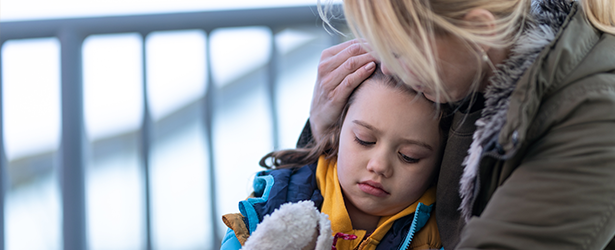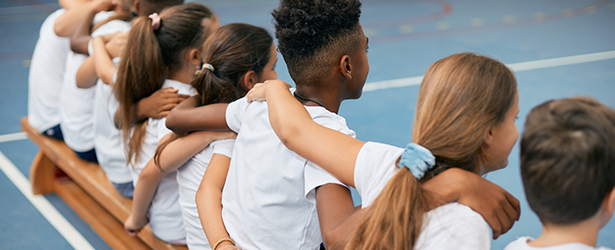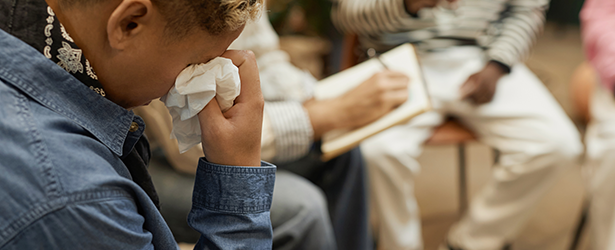
How to be a Community that 'Stays the Course' | Stewart Bogle.
This article was originally published on the Resilient Souls webpage, unpacking the podcast discussion between Stewart Bogle and Dr Daniel Pampuch.
Fresh off the Olympics, I found myself amazed at the skill and fitness levels of so many athletes, particularly on the final day when I watched the women’s marathon. These women, pushing themselves through mile after mile of gruelling conditions, demonstrated a resilience that seemed almost superhuman. It wasn’t just about physical stamina; it was about mental strength and a deep-seated determination to keep going despite the conditions.
Watching them, I couldn’t help but think that this kind of resilience is needed in the struggles we face in our own lives and communities, especially when trauma strikes. In a similar way to the marathon runners in Paris this year who rely on their training, support, and inner strength to cross the finish line, our communities require a collective resilience to keep going on the long and often difficult journey through grief and hardship.

The Ripple Effect of Trauma on Communities
This week, I had the privilege of interviewing Daniel Pampuch, CEO of Christian Schools Australia on my podcast. Daniel has extensive experience in navigating the impact of trauma on communities. My previous interviews often focused on the effects of trauma on individuals or families, but this time I wanted to explore how trauma has a ripple effect on a community, whether that’s a school, church, workplace, or any other close-knit group.
In these communities, we build relationships over time, and when something devastating happens, we don’t just observe it from a distance—we feel it deeply. The pain becomes personal, especially when it involves someone we’ve come to care about. It’s not uncommon to find ourselves grappling with a deep sense of empathy and sorrow, particularly when the suffering is close to home. For example, our own children might share a classroom with a child from a family going through a crisis, or we’ve worked closely with someone who suddenly faces a life-altering situation. The proximity of their pain can make it feel deeply personal and painful for us as well.

Supporting Schools and Close-Knit Groups During Crisis
In school settings, this can be particularly tough. You see the members of the affected family daily, watching as their lives change—health declines, attendance drops, and the routines that once seemed so normal begin to fade. Children come home with questions, emails bring the latest updates, and conversations in the schoolyard attempt to make sense of the ongoing situation. It’s in these moments that many of us find ourselves wrestling with a profound sense of helplessness, unsure of what to say or do.
Daniel shared invaluable insights from his years of experience, emphasizing the importance of prior relationships and the need for deeper connections before attempting to step in to support people. It’s natural to want to help, but he cautioned against well-intentioned actions that might inadvertently cause harm. Sometimes, the best thing we can do is recognize our own limitations and respect the boundaries of those who are suffering. He suggested the idea of appointing a ‘gatekeeper’—someone who act as a go between to help manage the influx of support and gently redirect efforts to ensure they’re appropriate and genuinely helpful.

Effective Strategies for Helping Families in Crisis
Practical support is crucial in times of crisis—whether it’s picking up and dropping off children, providing meals, or offering other forms of assistance that can ease the burden on a family in pain. Daniel also pointed out that trauma doesn’t just affect those at the centre; it has a ripple effect, touching many in the community in different ways. It’s important to acknowledge and address this broader impact as well. He suggested organizing memorial services, planting gardens, or creating other spaces where the community can come together to honour those who have been lost or are suffering. These acts can help the entire community process their grief alongside the immediate family in a supportive way.
The greatness of a community is most accurately measured by the compassionate actions of its members.
Coretta Scott King
Why Long-Term Support Matters in the Journey of Grief
One of the most significant points Daniel made was about the need for ongoing support. Grief doesn’t follow a linear and predictable path; it ebbs and flows, often continuing to impact us years after the initial loss. This is where the analogy of the marathon falls short—there is no finish line in grief. The journey continues long after the initial shock has worn off, and families need people who will stay with them for the long haul, especially on significant dates e.g. Mother’s or Father’s Day, graduations, birthdays, anniversaries etc that may trigger additional waves of sorrow. This is when members of the community, and teachers especially, can show incredible sensitivity and provide genuine support, but it does require intentionality and sensitivity. An example of this might be a teacher thinking carefully about how a child might feel during a class activity focused on a parent who has died on Mother’s or Father’s Day. This sort of sensitivity and thoughtfulness provides support that is compassionate and ongoing, not just in that first year but in the years to come. Another example might be including a photo of a classmate who has died at the graduation ceremony which might be particularly hard for siblings, family and friend who feel deeply the fact that person is not there.

I’ve often heard from people who felt overwhelmed by the outpouring of support immediately after a tragedy, only to see it dwindle as time went on. It’s understandable—life continues on, and people have their own struggles to deal with. But for those who are grieving, the journey is far from over. They need people who will stay the course with them, even when the initial wave of support has subsided.
I’ve walked that road myself, especially during my wife’s battle with cancer. Early on, I was exhausted, but there was no choice but to keep going. The hills seemed insurmountable, the miles stretched endlessly before me, and fatigue became my constant companion. But I had three little children who needed me to keep moving forward. I’ll be forever grateful for the people who chose to stay the course with us.
We rise by lifting others.
Robert Ingersoll
They ran alongside us when we needed food and water, kept us company when we felt like collapsing, and cheered us on when we doubted our ability to continue. But I also learned that staying the course isn’t easy, even for those who care deeply. Life’s demands pull people in different directions, and sometimes, even close friends struggle to know how to help.

How to Build a Community That Stays the Course
That’s why we’ve created Resilient Souls. Our mission is to support people in their pain, to help them realize they’re not alone, and to offer guidance for individuals and communities on how to stay the course with those who are hurting. Suffering should not be endured in isolation, and people can play a crucial role in helping others in and through their pain. But it’s not enough to offer a short-term burst of support; we need to recognize that the journey of suffering is a marathon, not a sprint.
Unlike the Olympic marathon runners, suffering is not something we can prepare for or train for. But as a community, we can prepare ourselves to support those around us. We can train ourselves to step in when needed, to run alongside those in pain, and most importantly, to stay the course. Many people find a way to keep going on their own, but it’s so much more bearable when they know they’re not alone.
Never underestimate the difference you can make in the lives of others. Step forward, reach out, and help.
Unknown
This requires intentionality and commitment. It means recognizing that our role in someone’s life may change over time—sometimes we’ll be running right beside them, other times we’ll be in the support van, ready to offer help when needed. But what matters most is that we don’t abandon them on the course or assume they are now fine. Where appropriate, we need to stay with them, even when the course is long, and the journey is hard.
I want to encourage you to take some time to listen to Daniel’s podcast episode and reflect on your own context—whether it’s a school, church, workplace, or community group. How can you find ways to stay the course and support someone going through a storm? What can you do now, as a team or as an individual, to prepare for the inevitable challenges that will come? Because one day, it might be you struggling to keep going, and what will make it bearable is having people around you who start with you and stay with you, long after the initial crisis has passed. Maybe that something you can do now is to develop a policy, do some training, or just have an open and honest conversation as a team that might prepare you for sensitive and helpful actions in the immediate and in the long term.
What about right now? Do you know someone in your community who’s suffering? Consider how you might journey with them and stay the course beyond the immediate crisis. Listen to Daniel’s podcast for some practical ideas or consider signing up to Resilient Souls to hear more stories and discover resources to help others who might find themselves on a particularly gruelling journey.
LISTEN TO THE PODCAST
Something to ponder/sit with/reflect on:
1. In what ways can you provide long-term practical and emotional support for individuals in your community, ensuring they feel seen and heard and properly supported even after the initial crisis part of their journey?
2. Reflect on a time when your community came together during a challenging period. What were the key factors that contributed to the collective resilience and support, and how can you ensure this happens again in the future?
From Reflection to Action
1. Identifying needs: Identify people in your community who might appreciate your support. Reach out to them this week and think about how you might stay connected. This will help to develop an awareness of needs prior to a major crisis.
2. Round table with your team/community leaders:
a) Brainstorm some of the practical things that people might need in the middle of a crisis, so you are somewhat prepared to offer support when something takes place.
b) Consider an action plan to assign roles in case of a community emergency. What roles will you need e.g. a gatekeeper, psychologists or counsellors etc?
3. Community Connection: Sometimes community needs are not obvious, so consider organising a small gathering for your community, focusing on building deeper relationships and fostering an environment where members feel comfortable sharing their struggles.
4. Preparation and training: Research local training programs or workshops on mental health first aid or community support to better equip yourself for helping others in need. Look at whether you have a policy in place for family support in a crisis and if not, start to develop one as a team.
5. Tune into Encouraging Podcasts: Build your resilience with stories from the Resilient Souls podcast and make sure you tune into Daniel's episode.
Bible verses about staying the course and supporting others.
1. Galatians 6:2 (NIV): "Carry each other’s burdens, and in this way you will fulfill the law of Christ." -
2. Hebrews 10:24-25 (NLT): "Let us think of ways to motivate one another to acts of love and good works. And let us not neglect our meeting together, as some people do, but encourage one another, especially now that the day of his return is drawing near."
3. 1 Thessalonians 5:11 (NLT): "So encourage each other and build each other up, just as you are already doing."
4. 1 Peter 3:8 (GNT): "Now, all of you should be like-minded and sympathetic, should love believers, and be compassionate and humble."